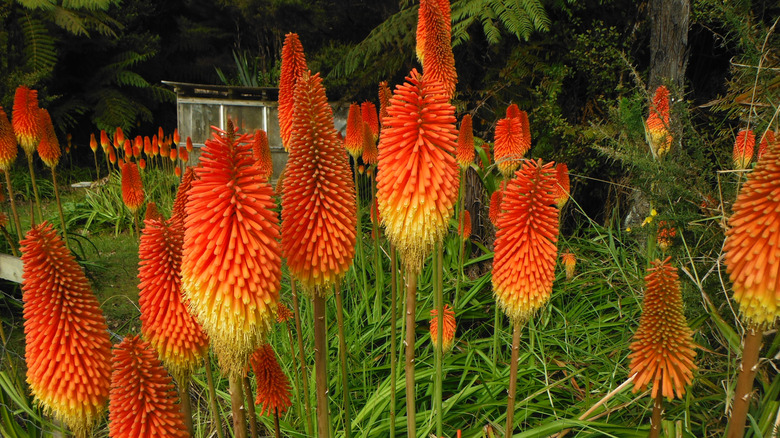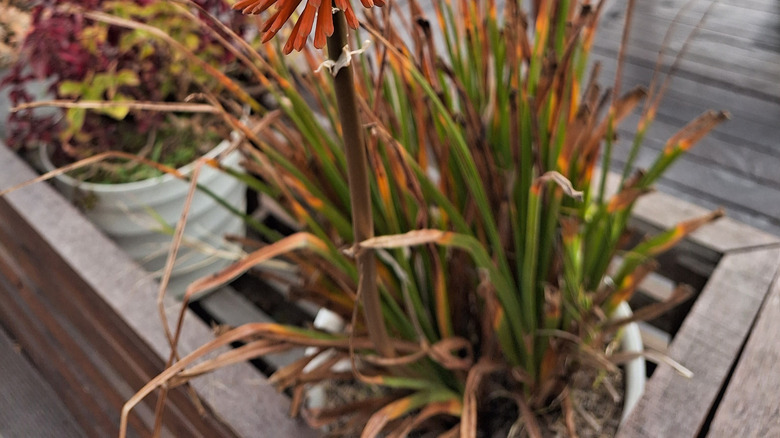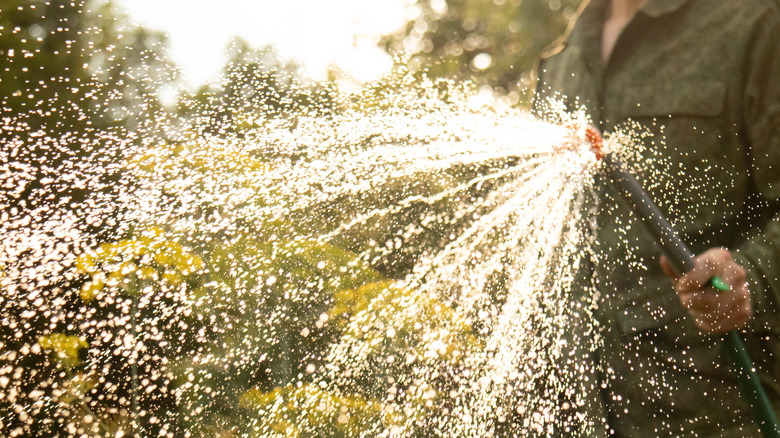The Unfortunate Disease That May Be Stopping Your Red Hot Poker Plant From Thriving
Red hot poker (Kniphofia) is an interesting perennial plant that's known for its large flowery spikes that look like bottlebrushes. They're primarily grown as ornamentals, with some species growing up to 6 feet tall. This red hot flower may even stand out in your yard while drawing hummingbirds, too. Overall, red hot poker is considered relatively easy to grow and maintain, including in hot and dry regions. It's even considered pest-resistant. With that said, there are some diseases that are known to impact these plants, and there are other important things to know before planting red hot pokers. In fact, if you're noticing your red hot pokers look a bit dull and are starting to wilt, you could be seeing signs of root rot.
The term "root rot" refers to a soil-borne disease that first starts within a plant's root system. These can affect nearly all types of plants, and they can be deadly and quickly spread to others nearby. There are two types of root rot that are known to affect red hot poker plants. These are caused by Fusarium and Phytophthora fungi.
The symptoms of root rot in red hot poker plants can often mimic those of dry and wilting foliage related to drought. You might notice yellowish, wilting leaves along with wilted flowers. As a result, gardeners might mistakenly give the plants more water, which can exacerbate the problem. Unfortunately, since root rot begins in the roots of plants like red hot poker, you likely won't see any exterior signs until the disease has progressed throughout the stems, foliage, and flowers.
How to identify root rot in red hot poker plants and what to do about it
Learning about root rot and how to deal with it is important for all plants, including hardy red hot poker. It's important to inspect the roots of a red hot poker plant you suspect might have this disease. Key signs of an afflicted plant are roots that are brown in color and soft or soggy in texture. As the disease progresses, you'll likely see wilting and yellowing. The risk of root rot is greatest during the winter months when soil drainage may not be optimal.
Once root rot takes over red hot pokers, the best course of action is to remove the affected plants so the fungal disease doesn't spread to others. You should also avoid planting new red hot poker plants in the same spot, as the soil is likely to be contaminated with the fungus. While certain commercial fungicides are available to treat plants, the problem is that you must know exactly which fungus has caused root rot in your red hot poker plant in the first place. This may involve outside diagnosis with a plant expert, which is not always accessible or affordable.
Reducing the risk of future root rot in red hot poker plants
Too much soil moisture is arguably the biggest threat to red hot poker plants. Aside from removing affected plants, you can help prevent future root rot incidents by avoiding excess moisture. While you want to make sure your plants have enough water, you need to avoid over-watering them, particularly if it has rained in your area recently. As a rule of thumb, established red hot poker plants need about 1 inch of water per week. Allow the soil to dry out completely before adding any new water.
Also, make sure the plants have well-draining soil to help reduce the risk of fungi growing and multiplying in an overly moist environment. Do not use more than 3 inches of mulch, as this can also cause plants to retain too much moisture. Also, avoid planting red hot poker in clay-based soils, as these have poorer drainage. Overall, red hot poker plants grow best in USDA hardiness zones 5 to 8.


